Among the many aquatic plants available, Hornwort stands out as one of the most beneficial and popular aquarium plants, especially for shrimp keeping. In this article, we will explore the benefits in shrimp keeping and its importance in aquatic plants.
Aquatic plants are essential for several reasons. Firstly, they help to maintain water quality by removing excess nutrients and reducing ammonia and nitrate levels. This is particularly important in shrimp and fish tanks, where high levels of these chemicals can be harmful. Secondly, aquatic plants provide shelter and hiding places for shrimp, which helps to reduce stress and improve overall health.
Hornwort, in particular, is a species of submerged aquatic plant that is highly popular among aquarists due to its ease of care and numerous benefits for aquatic animals like shrimp. This plant is easy to care for, grows quickly, and is very hardy. It has the ability to absorb carbon dioxide and release oxygen, which makes it an ideal addition to any aquarium.
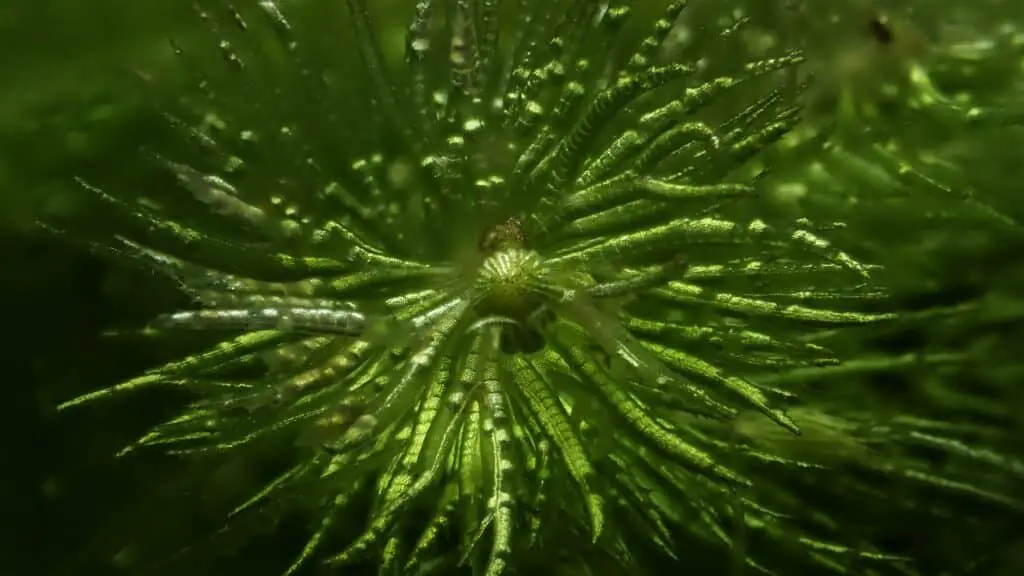
The primary focus of this article is to highlight the benefits of it in shrimp keeping. We will discuss how this plant can help to maintain water quality, provide shelter and food for shrimp, and promote overall health and well-being. Additionally, we will provide tips and tricks on how to grow and care for Hornwort in a shrimp tank, including lighting, water conditions, and pruning techniques.
By the end of this article, readers will have a thorough understanding of the benefits of Hornwort in shrimp keeping and how to incorporate it into their aquariums. Whether you are a beginner or an experienced aquarist, this article will provide you with valuable insights and practical advice on how to make the most of this amazing aquatic plant.
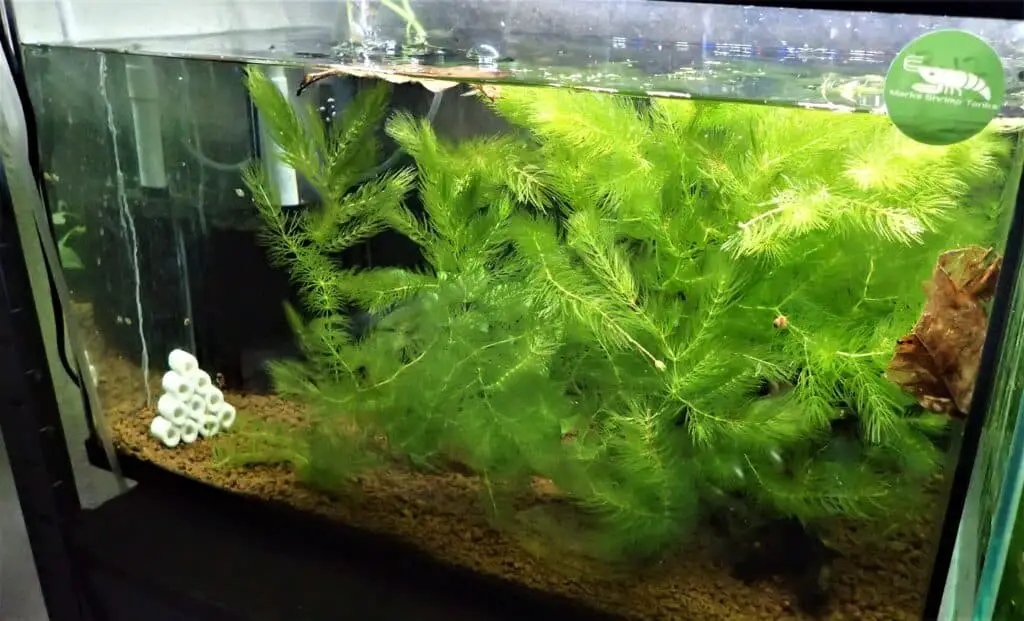
II. What is it?
Hornwort, also known by its scientific name Ceratophyllum demersum, is a popular aquatic plant species that is commonly found in freshwater environments around the world. It is a submerged plant that can be found in ponds, lakes, streams, and rivers. Due to its ease of care, hardiness, and numerous benefits, It has become a popular choice for aquarists and aquascapers alike.
Physical Characteristics:
Hornwort has a unique appearance that sets it apart from other aquatic plants. It has long, slender stems that are covered in small, needle-like leaves that grow in a whorled pattern. The stems are flexible and can grow up to several feet long, making them an ideal choice for background or mid-ground plants in aquariums. It can be green or reddish-brown in color, depending on the water conditions and lighting.
Growth Habits:
Hornwort is a fast-growing plant that can reproduce asexually through fragmentation. This means that pieces of the plant can break off and start growing into new plants, which can quickly fill up a tank if left unchecked.
It prefers cooler water temperatures, ranging from 60 to 80 degrees Fahrenheit, and can grow in a wide range of water conditions, including hard or soft water, acidic or alkaline water, and low or high light conditions. It is a hardy plant that can tolerate a wide range of water conditions, making it an ideal choice for beginners or those with less experience in aquariums.
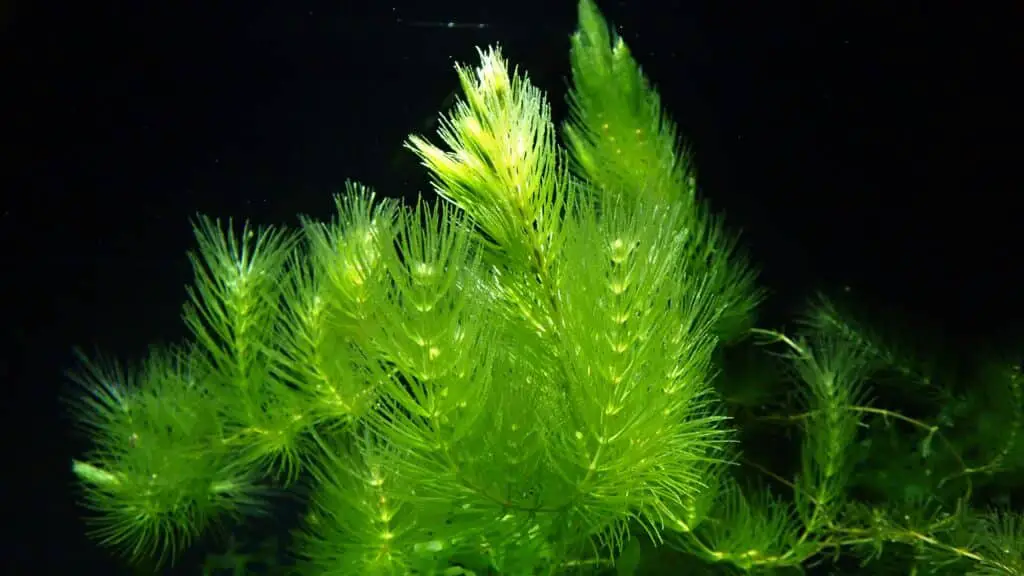
Role in Freshwater Ecosystems:
Hornwort plays an important role in freshwater ecosystems by providing numerous benefits to aquatic animals like shrimp. Firstly, it helps to maintain water quality by absorbing excess nutrients and reducing ammonia and nitrate levels.
This helps to prevent the growth of harmful algae and bacteria in the water, which can be detrimental to the health of shrimp and other aquatic animals. Secondly, It provides shelter and hiding places for shrimp so they don’t become fish food , which helps to reduce stress and improve overall health.
, which helps to reduce stress and improve overall health.
The needle-like leaves of Hornwort provide a safe place for shrimp to hide from predators or aggressive tank mates. Additionally, It can be used as a food source for shrimp, as they will often graze on the leaves and stems of the plant.
In conclusion, Hornwort is a popular aquatic plant species that is commonly found in freshwater environments around the world. It has numerous benefits for aquatic animals like shrimp, including maintaining water care quality, providing shelter and food, and promoting overall health and well-being. Its unique appearance and ease of care make it a popular choice for aquarists and aquascapers alike. In the next section, we will explore the benefits of Hornwort in shrimp keeping and how to incorporate it into a shrimp tank.
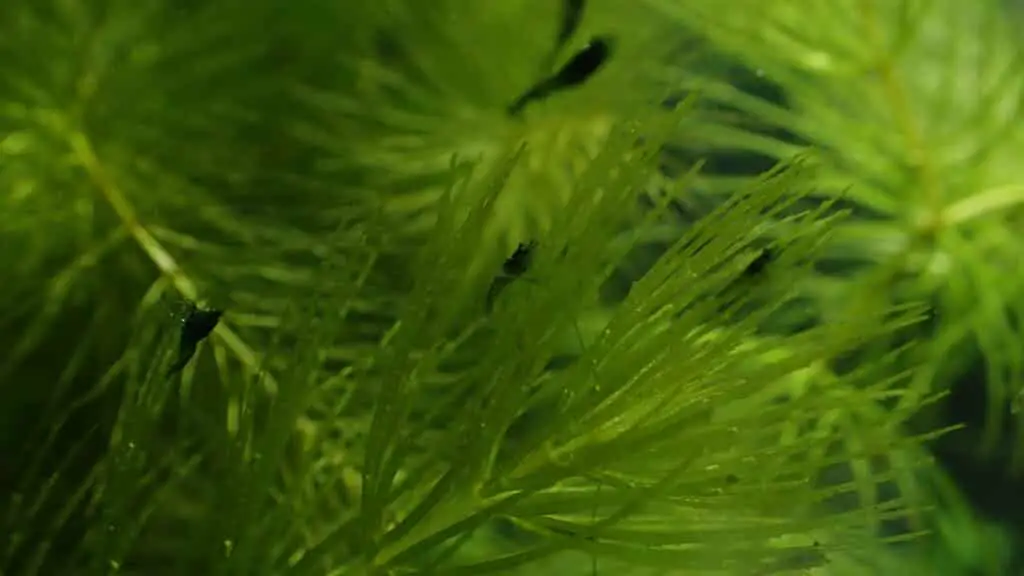
III. Shrimp Keeping:
I love it, Hornwort is an excellent choice for aquarists who keep shrimp in their tanks. It provides numerous benefits that help to maintain the health and well-being of these delicate creatures. In this section, we will discuss the benefits of Hornwort in shrimp keeping, how it helps to maintain water quality, and tips on how to incorporate it into a shrimp tank.
Benefits In adding it to a Shrimp Tank:
- Hiding Places: Hornwort provides excellent hiding places for shrimp. The needle-like leaves of the plant create a dense, bushy mass that provides an ideal place for shrimp to hide and seek refuge from predators or aggressive tank mates.
- Source of Food: Hornwort can also serve as a source of food for shrimp. Shrimp will often graze on the leaves and stems of the plant, which provides them with essential nutrients and helps to promote overall health.
- Water Quality: Hornwort has the ability to absorb excess nutrients and reduce ammonia and nitrate levels in the water. This helps to maintain water quality in the shrimp tank, which is crucial for the health and well-being of the shrimp. Additionally, Hornwort releases oxygen into the water, which helps to promote a healthy and oxygen-rich environment.
Maintaining Water Quality In The Aquarium
Hornwort is an excellent plant for maintaining water quality in a shrimp tank. It absorbs excess nutrients like phosphates and nitrates, which are produced by shrimp waste and leftover food. These excess nutrients can lead to the growth of harmful algae and bacteria in the tank, which can be detrimental to the health of the shrimp.
By absorbing these excess nutrients, Hornwort helps to prevent the growth of harmful algae and bacteria, and promotes a healthy and balanced aquatic environment. Additionally, Hornwort releases oxygen into the water, which helps to promote a healthy and oxygen-rich environment.
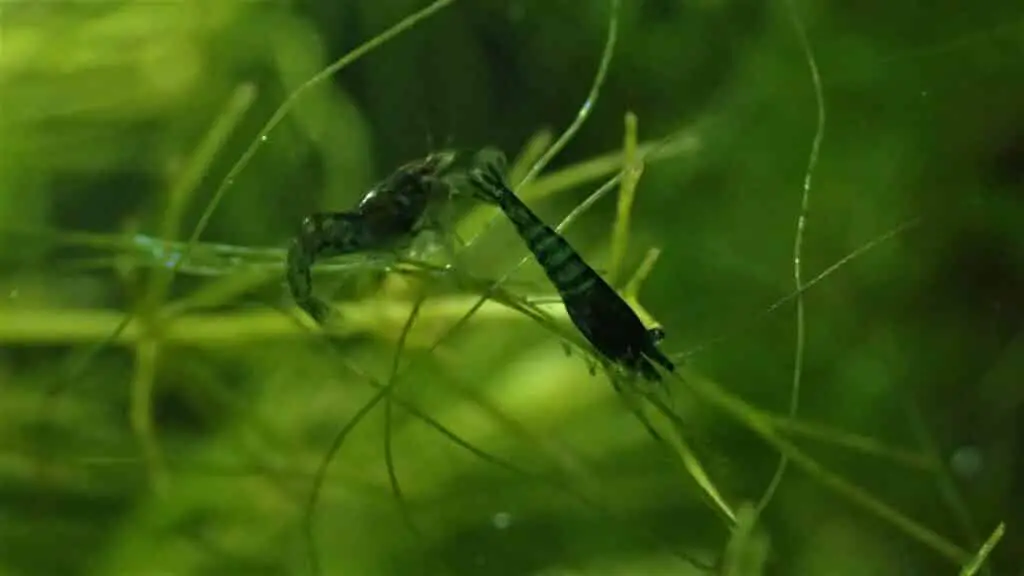
Incorporating into a Shrimp Tank:
There are several ways to incorporate Hornwort into a shrimp tank. One way is to use it as a background plant. Hornwort grows quickly and can easily fill up a background space in the tank. This provides an excellent hiding place for shrimp and creates a natural-looking environment.
Another way to use Hornwort in a shrimp tank is to create a floating mat. This makes a dense, bushy mat of aquarium plants that provides excellent hiding places for shrimp and helps to maintain water quality.
It is important to note that Hornwort can grow quickly and may require pruning to prevent it from taking over the tank. Additionally, Hornwort can shed needles and leaves, which may need to be removed from the tank to prevent clogging of filters and other equipment.
In conclusion, Hornwort is an excellent plant for shrimp keeping. It provides numerous benefits, including hiding places, a source of food, and the ability to maintain water quality. In the next section, we will explore the secret sauce of growing and caring for Hornwort in a shrimp tank.
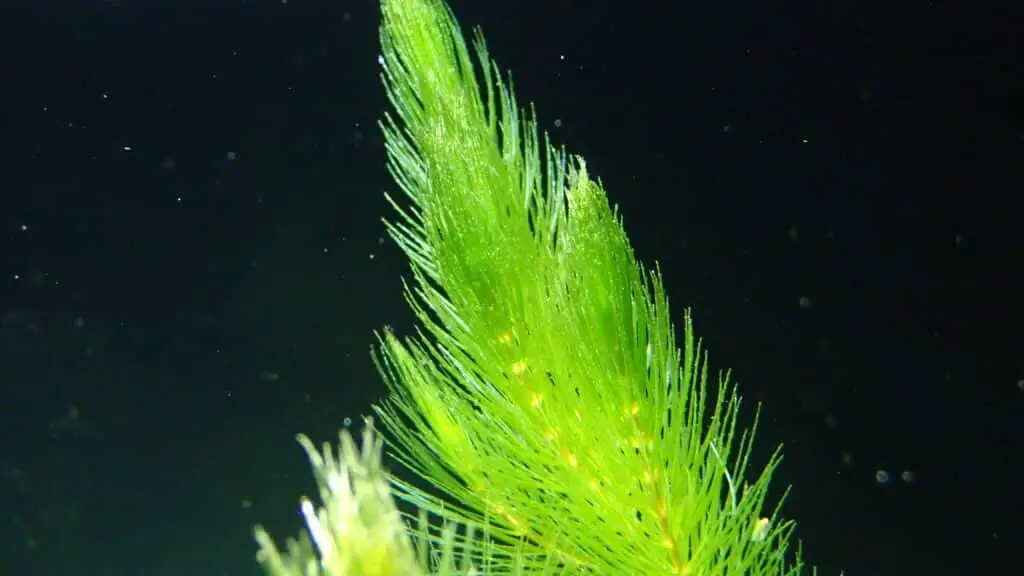
IV. The Secret Sauce: Tips and Tricks
Hornwort is a versatile and easy-to-care-for plant that can thrive in a variety of aquatic environments. In this section, we will provide detailed instructions on how to grow and care for Hornwort in an aquarium setting, including lighting, water conditions, and pruning techniques.
We will also discuss common problems that may arise when growing Hornwort and provide solutions to these issues. Lastly, we will share advanced tips for achieving optimal growth and health of Hornwort.
Growing and Caring for Hornwort in an Aquarium Setting:
Lighting:
Hornwort prefers moderate to high lighting conditions. However, it can also grow in low light conditions. The ideal lighting for Hornwort is around 2-3 watts per gallon of water. LED lights are an excellent choice for providing the right amount of light without overheating the tank. I have my shrimp tank lights on for 12 hours a day, I find that healthy plant growth promotes shrimp population growth.
lights are an excellent choice for providing the right amount of light without overheating the tank. I have my shrimp tank lights on for 12 hours a day, I find that healthy plant growth promotes shrimp population growth.
Water Conditions:
Hornwort is a hardy plant that can grow in a wide range of water conditions. It prefers a pH range of 6.5-7.5 and a water temperature range of 60-80°F. Hornwort can also tolerate a wide range of water hardness levels, from soft to hard water.
Pruning:
Hornwort is a fast-growing plant that can quickly become overgrown and take over a tank. To prevent this, it is important to prune Hornwort regularly. This can be done by simply trimming the stems with a pair of scissors or pruning shears. Hornwort can be trimmed to any desired length.
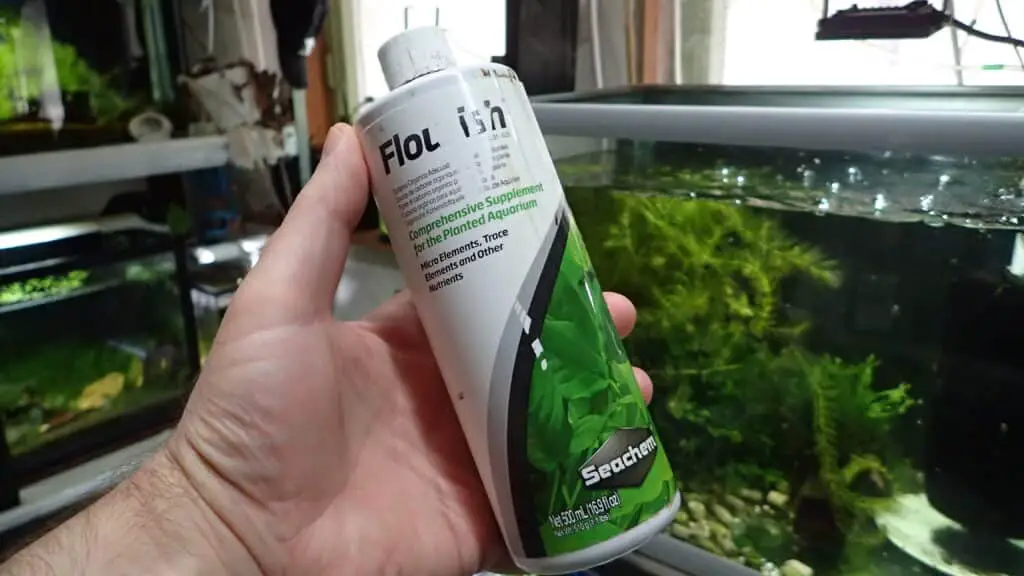
Common Problems and Solutions:
- Algae Growth: Hornwort is susceptible to algae growth, especially string algae if it is exposed to too much light. To prevent algae growth, it is important to provide the right amount of light for the plant. Additionally, algae can be manually removed by gently rubbing the leaves and stems with a clean cloth.
- Nutrient Deficiencies: Hornwort may experience nutrient deficiencies if it is not provided with enough nutrients in the water. A clear sign of this is if the plant starts to yellow This can be prevented by adding a liquid fertilizer to the water. Additionally, Hornwort can benefit from the addition of root tabs, which can provide additional nutrients to the roots.
Advanced Tips for Achieving Optimal Growth and Health of Hornwort:
- CO2 Injection: Hornwort can benefit from the addition of CO2 to the water. CO2 injection can help to promote optimal growth and health of the plant by providing it with the necessary carbon dioxide it needs to grow. A CO2 diffuser can be added to the tank to inject CO2 into the water.
- Fertilizers: Hornwort can benefit from the addition of fertilizers to the water. Liquid fertilizers can provide the necessary nutrients the plant needs to grow and thrive. Additionally, root tabs can be added to the substrate to provide additional nutrients to the roots.
In conclusion, Hornwort is an easy-to-care-for plant that can thrive in a variety of aquatic environments. By following the tips and tricks outlined, aquarists can successfully grow and care for Hornwort in their aquariums. Pruning regularly, providing the right lighting and water conditions, and adding fertilizers can help to promote optimal growth and health of the plant. By incorporating Hornwort into a shrimp tank, aquarists can provide their shrimp with a natural-looking environment that promotes their health and well-being.
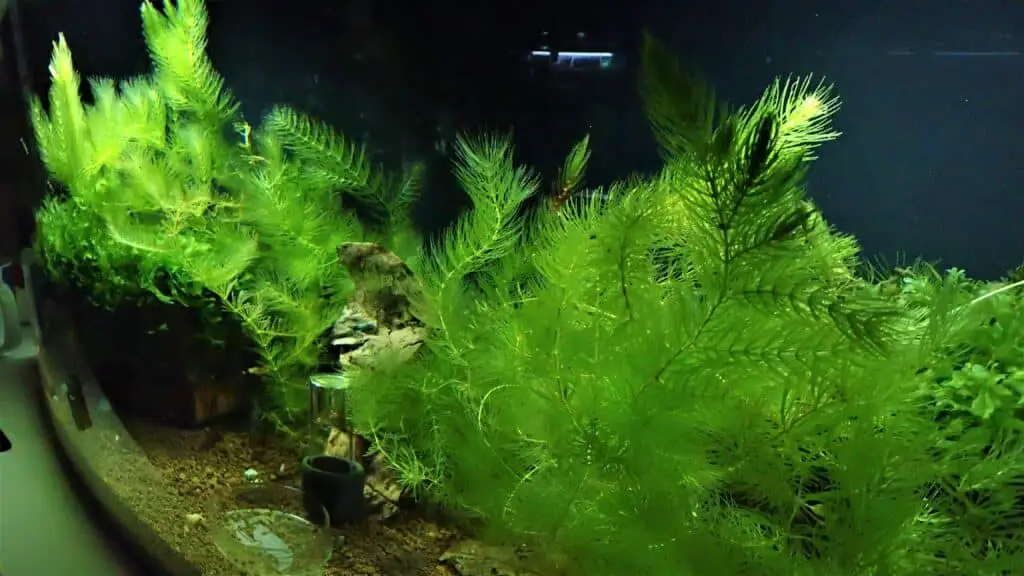
V. Conclusion:
In this article, we have explored the benefits of Hornwort in shrimp keeping and its importance in aquatic plants. Hornwort is a popular aquatic plant species that provides numerous benefits to aquatic animals like shrimp.
It helps to maintain water quality by removing excess nutrients and reducing ammonia and nitrate levels. Hornwort also provides shelter and hiding places for shrimp, which helps to reduce stress and improve overall health. Additionally, Hornwort can be used as a food source for shrimp, as they will often graze on the leaves and stems of the plant.
We have discussed how Hornwort is a fast-growing plant that can quickly fill up a tank if left unchecked. It is important to prune Hornwort regularly to prevent it from taking over the tank. Additionally, we have provided tips on how to grow and care for Hornwort in a shrimp tank, including lighting, water conditions, and pruning techniques.
Incorporating Hornwort into a shrimp tank is crucial for the overall health and well-being of the aquatic environment. It helps to maintain water quality and provides an excellent hiding place and food source for shrimp. By following the tips and tricks outlined in this article, aquarists can successfully incorporate Hornwort into their shrimp tanks and promote the health and well-being of their shrimp.
In conclusion, Hornwort is an excellent choice for aquarists who keep shrimp in their tanks. Its ability to maintain water quality, provide hiding places and food, and promote overall health and well-being makes it an ideal choice for shrimp keeping. We hope that this article has provided valuable insights and practical advice on how to make the most of this amazing aquatic plant.

VI. FAQ:
Q: Is Hornwort invasive? A: Yes, Hornwort can be invasive if left unchecked.
Q: Is Hornwort suitable for a pond? A: Yes, Hornwort is suitable for a pond, but it is important to monitor its growth and prune it regularly to prevent it from taking over the pond.
Q: Can Hornwort cause algae in a tank? A: Hornwort can contribute to algae growth if it sheds needles and leaves. To prevent algae growth, it is important to remove any decaying plant material and maintain good water quality.
Q: What phylum does Hornwort belong to? A: Hornwort belongs to the phylum Anthocerotophyta, which includes non-vascular plants that are similar to mosses and liverworts.
Q: What is Hornwort melting? A: Hornwort melting is a common problem that occurs when the plant begins to deteriorate and decay due to poor water quality, lack of nutrients, or insufficient lighting.
Q: How many species of Hornwort are there? A: There are approximately 300 species of Hornwort, with the most common being Ceratophyllum demersum.
Q: Can Hornwort be used as a floating plant? A: Yes, Hornwort can be used as a floating plant by tying it to a piece of driftwood or mesh netting and allowing it to float on the surface of the water.
Q: Is Hornwort a good aquarium plant? A: Yes, Hornwort is a good aquarium plant as it is easy to care for and provides numerous benefits to aquatic animals in a tank.
Q: Does Hornwort produce oxygen? A: Yes, Hornwort produces oxygen as a byproduct of photosynthesis.
Q: What fish will eat Hornwort? A: Some live fish may try to eat Hornwort, such as goldfish and koi.
Q: Does Hornwort need CO2? A: Hornwort can benefit from the addition of CO2 to the water, but it can also grow and thrive in tanks without CO2 injection by adding fertilizers that provide necessary nutrients
